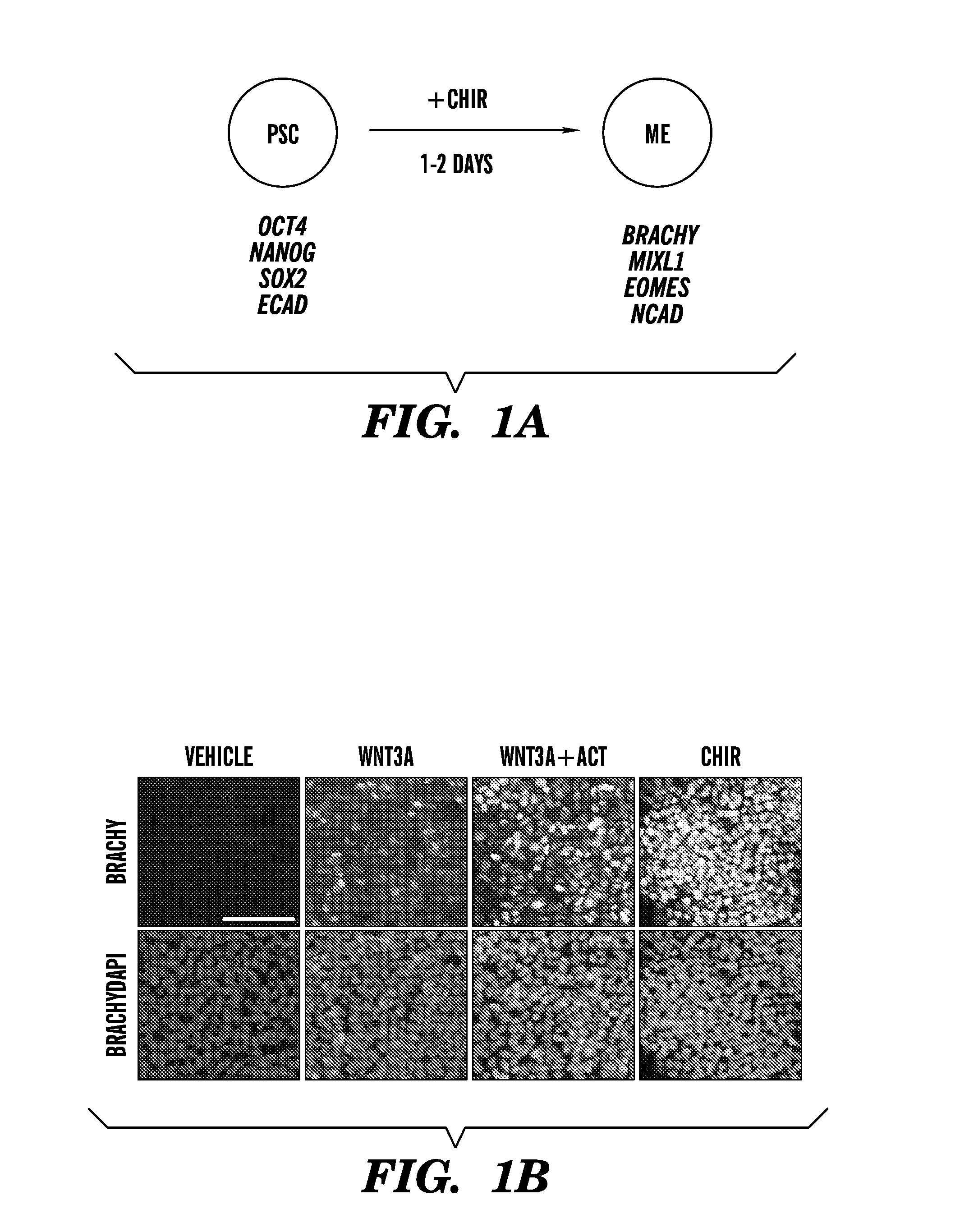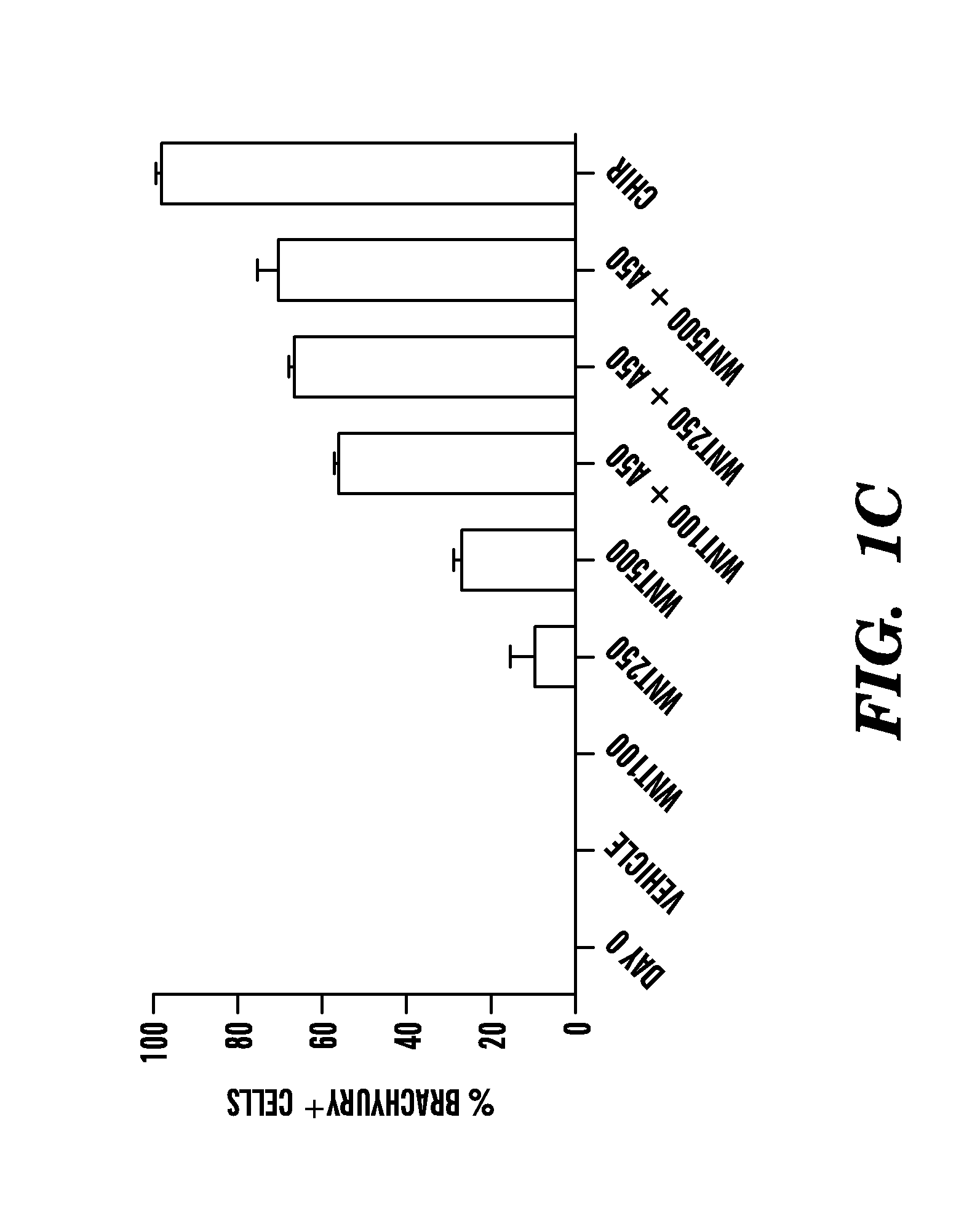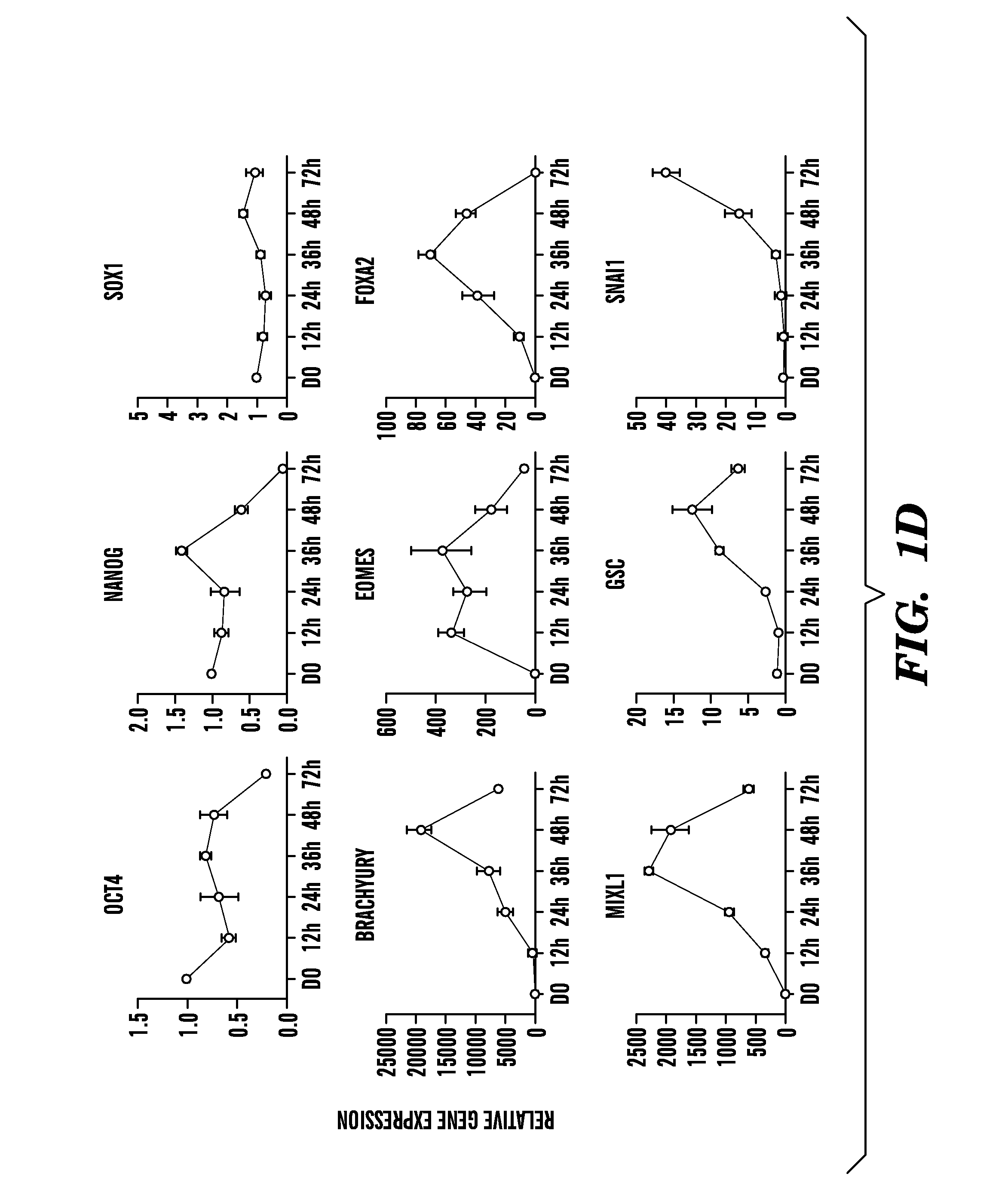Methods of generating intermediate mesoderm cells from human pluripotent stem cells
a technology of human pluripotent stem cells and mesoderm cells, which is applied in the direction of cell culture active agents, biochemistry apparatus and processes, and embryonic cells, etc., can solve the problems of significant morbidity and mortality of patients with ckd, reduced quality of life, and limited options
- Summary
- Abstract
- Description
- Claims
- Application Information
AI Technical Summary
Benefits of technology
Problems solved by technology
Method used
Image
Examples
example 1
Human ES and iPS Cell Culture
[0031]For generation of human iPS cells, BJ (ATCC) and HDFalpha (Invitrogen) fibroblasts can be reprogrammed by two rounds of overnight transduction with pMIG retroviruses for OCT4, SOX2, KLF4, and c-MYC (Addgene) produced in 293FT cells (Invitrogen). Human embryonic stem cell lines, H1, H9, and CHB8-H2B-GFP hESCs (passages 30-50), as well as BJ and HDF iPSCs (passages 12-40) can be cultured on irradiated mouse embryonic fibroblasts (GlobalStem) in DMEM / F12 (Invitrogen) supplemented with 20% KnockOut serum replacement (Invitrogen), 1 mM nonessential amino acids (Invitrogen), 2 mM Glutamax (Invitrogen), 0.55 mM 2-mercaptoethanol (Invitrogen), penicillin / streptomycin (Invitrogen), and 10 ng / mL recombinant human bFGF / FGF2 (Invitrogen).
Cells can be passaged using Collagenase Type IV (STEMCELL Technologies) at a 1:3 split ratio every 5-7 d. For feeder-free culture, hESCs previously grown on MEFs are initially passaged using Collagenase Type IV onto plates coa...
example 2
Differentiation
[0032]For differentiation experiments, hESCs or hiPSCs can be grown on Geltrex, washed once with PBS and dissociated into single cells with Accutase (STEMCELL Technologies). Cells are plated at a density of 4×104 cells / cm2 onto Geltrex-coated plates in mTeSR1 medium supplemented with the ROCK inhibitor Y27632 10 μM (Stemgent). Cells are fed daily with mTeSR1 without Y27632 for 2-3 days until they reached 50% confluency.
Mesendoderm differentiation—the media is changed to Advanced RPMI (A-RPMI, Invitrogen) supplemented with 1×L-glutamax and 1× penicillin / streptomycin and either CHIR99021 (CHIR, Stemgent), human Wnt3a (R&D systems), and / or human activin A (R&D systems) at the doses described.
Definitive endoderm differentiation—cells are treated with A-RPMI+1×L-glu+1×P / S+5 μM CHIR for 24 hours, then A-RPMI+1×Lglu+1×P / S+100 ng / mL of activin A for 2-3 days.
Hepatic differentiation—cells at the definitive endoderm stage are treated with A-RPMI+1×L-glu+1×P / S+1×B27 supplement (...
example 3
Characterization of Differentiated Cells Via Immunofluorescence
[0033]For immunofluorescence studies, cultures are washed once with PBS (Invitrogen) and fixed in 4% paraformaldehyde for 15 min at room temperature (RT). Fixed cells are then washed three times in PBS and incubated in blocking buffer (0.3% Triton X-100 (Fisher Scientific) and 5% normal donkey serum (EMD Millipore) in PBS) for 1 hour at RT.
[0034]The cells are then incubated with primary antibody overnight at 4° C. or for 2 hours at RT in antibody dilution buffer (0.3% Triton X-100 and 1% BSA (Roche) in PBS). Cells are then washed three times in PBS and incubated with Alexa Fluor 488-, 555-, or 647-conjugated secondary antibodies (1:500) (Molecular Probes) in antibody dilution buffer for 1 hour at RT. For immunostaining with Biotinylated Lotus Tetragonolobus Lectin (LTL, Vector Labs), a Streptavidin / Biotin Blocking Kit (Vector Labs) and Alexa Fluor 488- or 647-conjugated Streptavidin (Molecular Probes) were used according...
PUM
 Login to View More
Login to View More Abstract
Description
Claims
Application Information
 Login to View More
Login to View More - R&D
- Intellectual Property
- Life Sciences
- Materials
- Tech Scout
- Unparalleled Data Quality
- Higher Quality Content
- 60% Fewer Hallucinations
Browse by: Latest US Patents, China's latest patents, Technical Efficacy Thesaurus, Application Domain, Technology Topic, Popular Technical Reports.
© 2025 PatSnap. All rights reserved.Legal|Privacy policy|Modern Slavery Act Transparency Statement|Sitemap|About US| Contact US: help@patsnap.com



